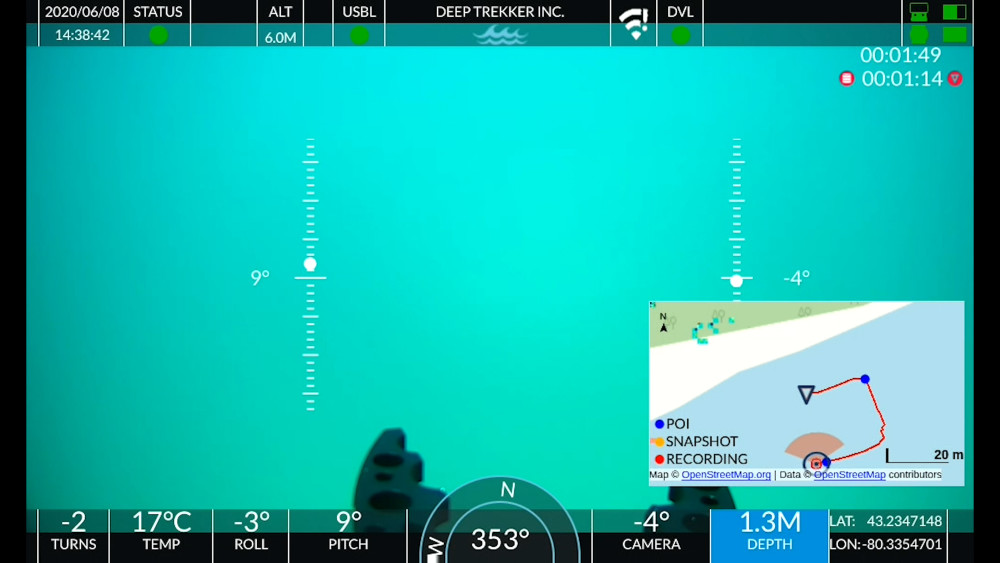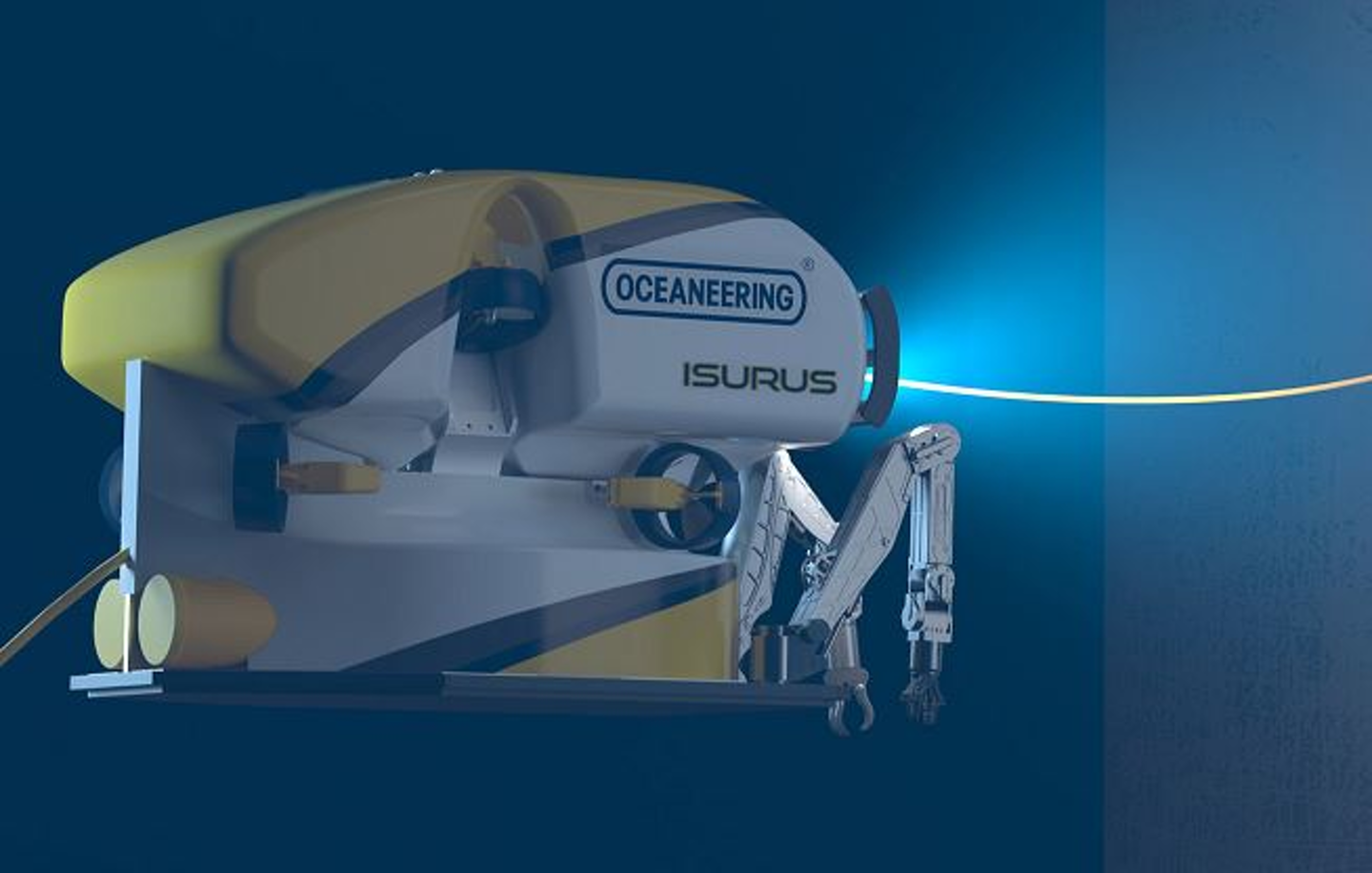Home › Forums › ROV › ROV Technical Discussions › Measuring CM with sonar?
- This topic has 32 replies, 10 voices, and was last updated 13 years, 6 months ago by
Savante.
-
AuthorPosts
-
May 24, 2010 at 9:47 am #27985
Craig Thorngren
ParticipantBoab,
I’m not sure where your getting your info from regarding pricing etc… The BlueView 130 Degree Field of View is slightly less than $30K USD, while the Gemini 120 Degree Field of View is in excess of $35K USD… You can now get a 900khz 45 degree field of view for less than $15KUSD.
If your people prefer it (the Gemini), and you don’t mind spending the extra money, your right, it’s a no brainer…
Chief
May 24, 2010 at 10:43 am #27986Isak
ParticipantThe reason fore this job is to measure the percentage wear on the anodes.
It’s a lot of anode that need measurement, so we need an good plan fore making it easy with ower ROV.AS I sad earlier we are only brainstorming ideas right now.
And we have been asked if we could do this job.
We haven’t decided yet if we want the job, because first we need an way to measure the anodes easy.So if anyone have an good idea how to do this pleas let me know 😀
Im guessing it’s many that have done this before, but no one at us has done it with an ROV before, so we are maby finding a way to make the wheel one more time now 😯
Anyways thx fore all the replays have mailed blueview and tritech asking fore equipment.
If the price on the sonar that could do this, it’s ok, we could buy it, and have somthing fore other jobs also.
As I can se now the only way with ower ROV is with an sonar Im guessing.
-Isak-
May 24, 2010 at 12:11 pm #27987Savante
ParticipantIsak,
I’d go the route reccomended by James; go find out what your client has, what they want in terms of tolerances and how much time ($$) they have to spend per anode. I’m assuming that you’re not using a DP2 MPSV so you can probably spend a little more time than most.
Just food for thought; just had a read of the blueview website.
Anode length = 3m
Field of view = 45 degrees (full field)
Minimum standback to get the whole anode in frame = 3.6m
256 beams, each with angular width = 1x 1 degree
Beam spacing is 0.18degAccording to the specification, you have a range accuracy of 0.2cm. Ok, that’s fine but it’s in a straight line and most likely from the very centre of the sonar head. You have to factor in the geometry of the problem. You’d be standing back from the anode in order to get both edges in frame at the same time within your frame of view.
Do the trigonometry based on the width of the beam and work out what your error margin is. Also factor in vehicle movement in 1 x 25th second (rov movement should be negligible factor actually).
Have a look at the one for the tritech gemini too, they’ve got a wider field of view. But definately take note of the measurement errors that arise from using the measurements at full field angle.
Horses for courses. If metrology subsea was easy, we’d all be doing it for 15k USD.
May 24, 2010 at 12:36 pm #27988Gina McLauchlan
ParticipantMany moons ago I was involved in a similar project to gain detailed dimensions of the anodes. On this project we tasked divers with the taking the measurements and the ROV with taking the actual CP readings.
The dimensions were checked against the original installation dimensions to see the % lost on the anodes over X years. These along with the CP readings were used to produce a 3D model of the CP system on the platform, thus giving accurate information on the life span of the anodes and any areas of the CP system that were weaker than other areas.
This is the only reason I can think of for taking the measurements of the anodes themselves. If this is the reason then the measurements must accurate!
It would be prudent in this early stage of planning to find out from the client how accurate these measurements must be…they should know the tolerances they can work from. Then you would be able to purchase instruments that would return results within these tolerances.
Gina
May 24, 2010 at 1:15 pm #27989HelpMaBoab
ParticipantAWNAW here we go…Not meaning to get into a spec fight over this But!
I am commenting on the equipment we used
1) Blueview DP900-90, 90deg scan, range 180ft,weight in air 19.8lb, in water 9.6 lb, depth rating 4000m, 13.4" x 5.5" dia. Prices quoted £24K-28K2) Gemini 720i, 120deg scan, range 385ft, weight in air 8.82lb, in water 2.65lb, depth rating 1000m (4000m unit will be slightly heavier), 5.31" x 4.33" x 8.98". Prices quoted around £18000.
(We used the prototype unit)So as far as I can make out spec wise the Gemini wins it (check out both spec sheets).
Both prices were ballpark at the start of the year.
All I meant is that We, the operators prefered using the Gemini and the clients were more impressed with the Gemini unit.
To be honest there is not a lot between them as they both do what they say on the tin.
So at the end of the day it will be down to the price ease of use and reliability.Back to you Byeee!!!
May 24, 2010 at 4:37 pm #27990Isak
ParticipantWhat they are asking fore is:
42 anodes:
-Picture of each anode with sustained no Pele, anode type and anode number.
-How much each anode’s are wear in%
I have detailed information about the anodes, length, width and so on, so no problem finding the % if I only can measure them…
With 0.2cm is way better than hoped fore.
Witch sonar was that you had read on?May 25, 2010 at 5:04 am #27991Isak
ParticipantOK
ow about lasers mounted on the ROV
They always have 10cm apart from another.Then we will have somthing to measure out from on the picture?
May 25, 2010 at 1:17 pm #27992rovnumpty
ParticipantIsak
The contract sounds like a fairly standard inspection job.
Are you sure the client wants a measurement of each anode?
Standard practice on an inspection contract would be to have a trained inspector (CSWIP 3.4U qualified) to comment on each anode and decide depletions etc.
May 26, 2010 at 3:01 am #27993tc1
ParticipantSeems to me that rovnumpty is right.
Inspection of anodes is fairly standard throughout the world.
Tolerances for anodes are easily acceptable from a trained observer.
Using the methods previously mentioned will greatly increase the time spent in performing a task that is done in the industry every day.May 26, 2010 at 9:17 am #27994Andy Shiers
ParticipantHmmmmm , My thoughts exactly 😯
Refer to previous 8)May 27, 2010 at 7:02 am #27995tc1
Participantyup agreed Lostboy
May 27, 2010 at 8:27 am #27996James McLauchlan
ParticipantStandard practice on an inspection contract would be to have a trained inspector (CSWIP 3.4U qualified) to comment on each anode and decide depletions etc.
And in many cases sample anodes at different elevations… not the whole lot fitted to the structure.
May 27, 2010 at 10:07 am #27997Andy Shiers
ParticipantI agree 😀
Someones think tank to justify their job 😯 Change the wheel perhaps or just modify it …………………….. 😕
Tea anyone ? 8)May 28, 2010 at 3:21 am #27998tc1
Participantone of the training establishments will probably make a course for measuring anodes now and charge zillions of buck woo hooo get me on it l 😀
May 30, 2010 at 11:59 am #27999Isak
ParticipantHmm.
I’ll test out the laser idea when I get back to base, see if I can mount 2lasers on, and measure an known object.
If that works it’s an cheap solution:)
But would have bean fun getting an new sonar.
-
AuthorPosts
- You must be logged in to reply to this topic.



